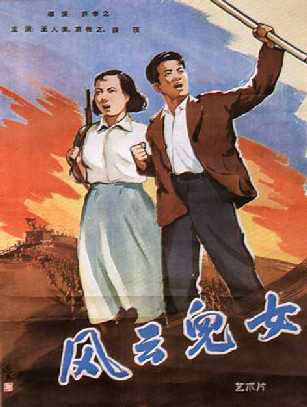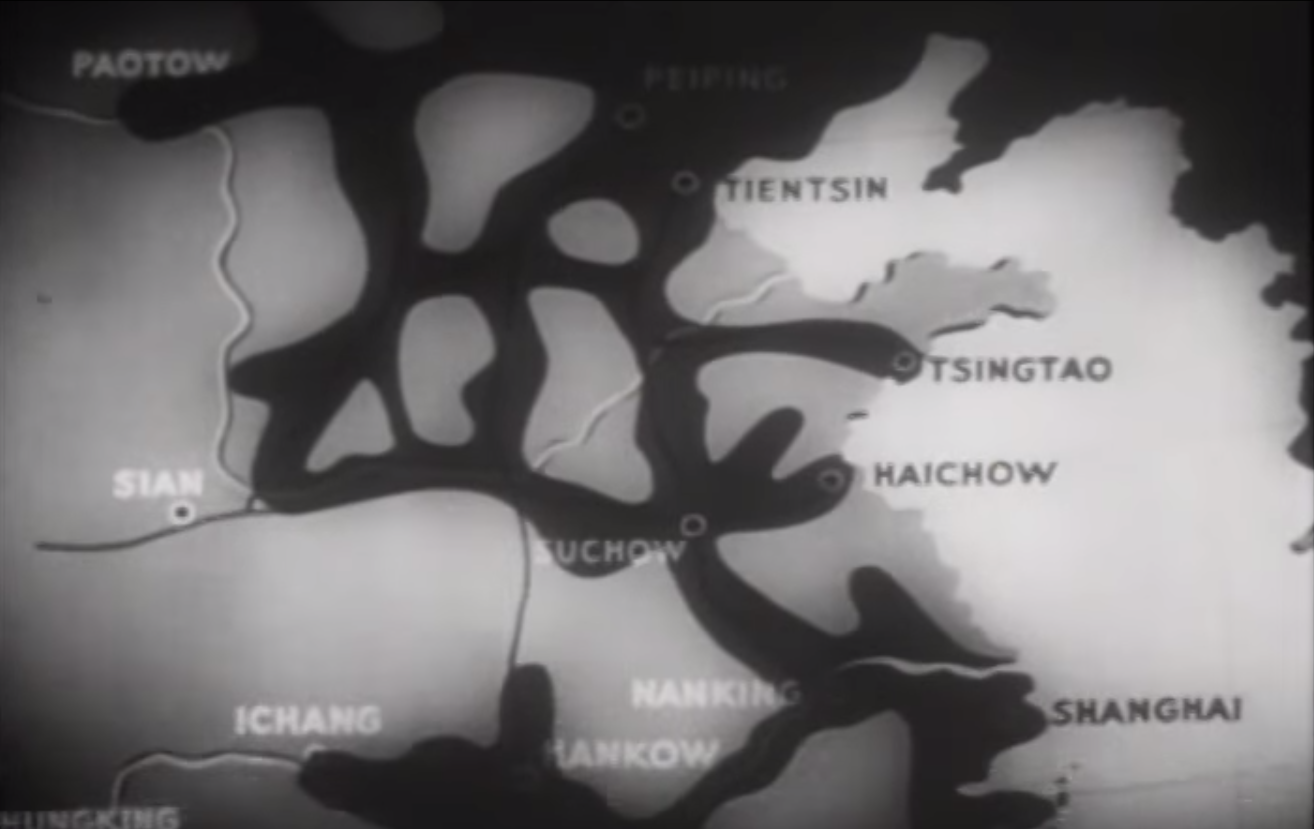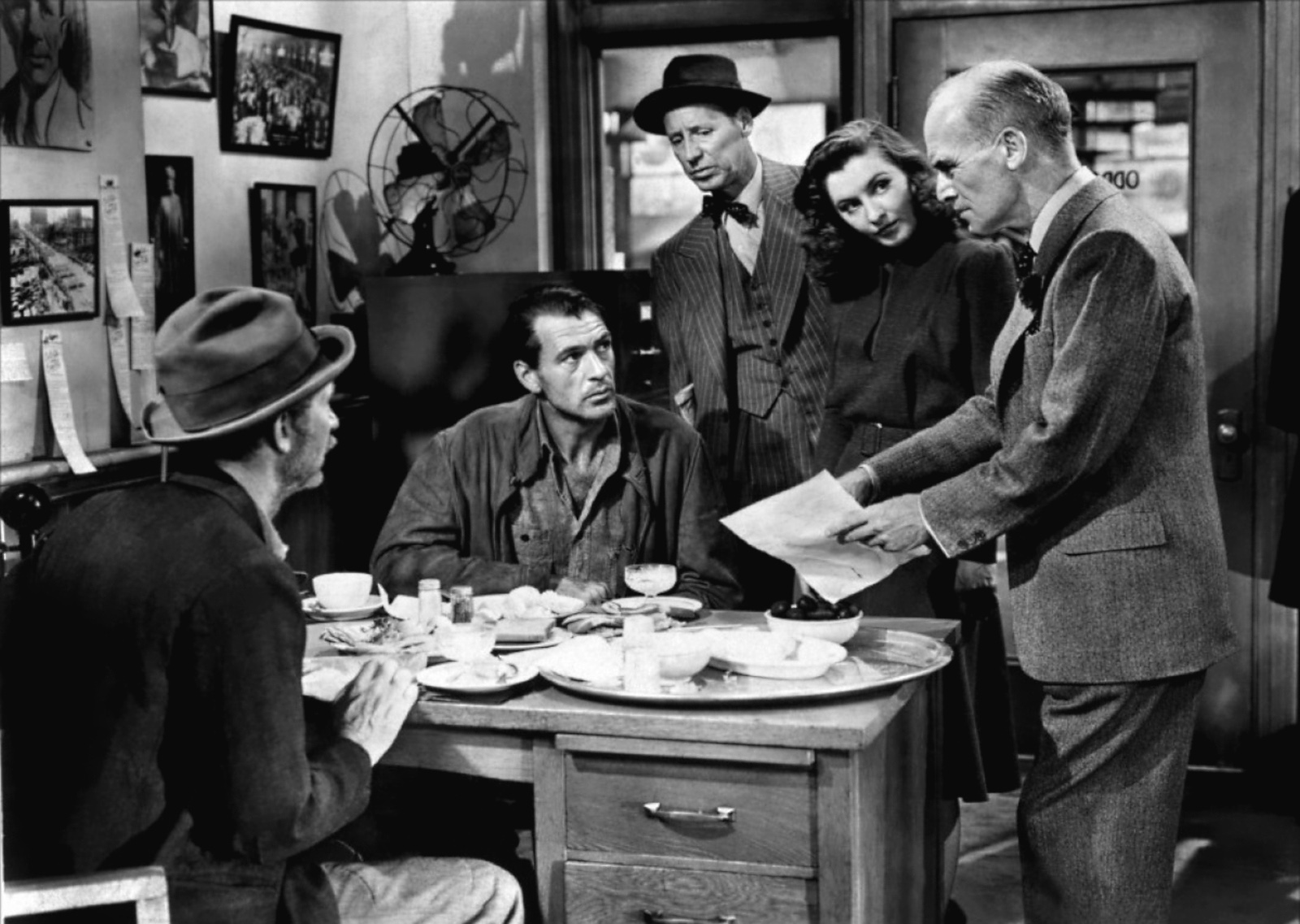|
The 400 Million
''The 400 Million'', also known as ''China in 1938'', was a 1939 black-and-white documentary film by Dutch filmmaker Joris Ivens about the Second Sino-Japanese War, part of the East Asian theater of World War II. The filmmaker moved between the Republican, Communist, and guerrilla forces of the Chinese resistance to Japanese invasion. Their dialogue in Mandarin is accompanied by English translations read by American actors.Anderson, Kevin Taylor"The 400 Million (Holland, Ivens, 1938)" in ''Encyclopedia of the Documentary Film'', Vol. 1, pp. 432 f.Routledge (New York), 2006.Anderson, Kevin Taylor"The 400 Million (Holland, Ivens, 1939)" in ''The Concise Routledge Encyclopedia of the Documentary Film'', pp. 262 f.Routledge (New York), 2013. . Name The title refers to the population of China, estimated from the highly untrustworthy official censuses.Tanner, Harold Miles''China: A History'', Vol. 2: "From the Great Qing Empire through the People's ... [...More Info...] [...Related Items...] OR: [Wikipedia] [Google] [Baidu] |
Joris Ivens
Georg Henri Anton "Joris" Ivens (18 November 1898 – 28 June 1989) was a Dutch documentary filmmaker. Among the notable films he directed or co-directed are '' A Tale of the Wind'', '' The Spanish Earth'', ''Rain'', ''...A Valparaiso'', ''Misère au Borinage'' (''Borinage''), '' 17th Parallel: Vietnam in War'', ''The Seine Meets Paris'', '' Far from Vietnam'', ''Pour le Mistral'' and ''How Yukong Moved the Mountains''. Early life and career Born Georg Henri Anton Ivens into a wealthy family, Ivens went to work in one of his father's photo supply shops and from there developed an interest in film. Under the direction of his father, he completed his first film at 13; in college he studied economics with the goal of continuing his father's business, but an interest in class issues distracted him from that path. He met photographer Germaine Krull in Berlin in 1923, and entered into a marriage of convenience with her between 1927 and 1943 so that Krull could hold a Dutch passport ... [...More Info...] [...Related Items...] OR: [Wikipedia] [Google] [Baidu] |
Standard Mandarin
Standard Chinese ()—in linguistics Standard Northern Mandarin or Standard Beijing Mandarin, in common speech simply Mandarin, better qualified as Standard Mandarin, Modern Standard Mandarin or Standard Mandarin Chinese—is a modern standardized form of Mandarin Chinese that was first developed during the Republican Era (1912‒1949). It is designated as the official language of mainland China and a major language in the United Nations, Singapore, and Taiwan. It is largely based on the Beijing dialect. Standard Chinese is a pluricentric language with local standards in mainland China, Taiwan and Singapore that mainly differ in their lexicon. Hong Kong written Chinese, used for formal written communication in Hong Kong and Macau, is a form of Standard Chinese that is read aloud with the Cantonese reading of characters. Like other Sinitic languages, Standard Chinese is a tonal language with topic-prominent organization and subject–verb–object (SVO) word order. Compar ... [...More Info...] [...Related Items...] OR: [Wikipedia] [Google] [Baidu] |
Chinese Communist Party
The Chinese Communist Party (CCP), officially the Communist Party of China (CPC), is the founding and One-party state, sole ruling party of the China, People's Republic of China (PRC). Under the leadership of Mao Zedong, the CCP emerged victorious in the Chinese Civil War against the Kuomintang, and, in 1949, Mao Proclamation of the People's Republic of China, proclaimed the establishment of the People's Republic of China. Since then, the CCP has governed China with List of political parties in China, eight smaller parties within its United Front (China), United Front and has sole control over the People's Liberation Army (PLA). Each successive leader of the CCP has added their own theories to the Constitution of the Chinese Communist Party, party's constitution, which outlines the ideological beliefs of the party, collectively referred to as socialism with Chinese characteristics. As of 2022, the CCP has more than 96 million members, making it the List of largest political parties ... [...More Info...] [...Related Items...] OR: [Wikipedia] [Google] [Baidu] |
Chinese National Anthem
The "March of the Volunteers" (), originally titled the "March of the Anti-Manchukuo Counter-Japan Volunteers", has been the official national anthem of the People's Republic of China since 1978. Unlike previous Chinese state anthems, it was written entirely in vernacular Chinese, rather than in Classical Chinese. The Japanese invasion of Manchuria saw a boom of nationalistic arts and literature in China. This song had its lyrics written first by the communist playwright Tian Han in 1934, then set to melody by Nie Er and arranged by Aaron Avshalomov for the communist-aligned film '' Children of Troubled Times'' (1935). It became a famous military song during the Second Sino-Japanese War beyond the communist faction, most notably the Nationalist general Dai Anlan designated it to be the anthem of the 200th Division, who fought in Burma. It was adopted as the PRC's provisional anthem in 1949 in place of the "Three Principles of the People" of the Republic of China (1912– ... [...More Info...] [...Related Items...] OR: [Wikipedia] [Google] [Baidu] |
The March Of The Volunteers
The "March of the Volunteers" (), originally titled the "March of the Anti-Manchukuo Counter-Japan Volunteers", has been the official national anthem of the People's Republic of China since 1978. Unlike previous Chinese state anthems, it was written entirely in vernacular Chinese, rather than in Classical Chinese. The Japanese invasion of Manchuria saw a boom of nationalistic arts and literature in China. This song had its lyrics written first by the communist playwright Tian Han in 1934, then set to melody by Nie Er and arranged by Aaron Avshalomov for the communist-aligned film '' Children of Troubled Times'' (1935). It became a famous military song during the Second Sino-Japanese War beyond the communist faction, most notably the Nationalist general Dai Anlan designated it to be the anthem of the 200th Division, who fought in Burma. It was adopted as the PRC's provisional anthem in 1949 in place of the "Three Principles of the People" of the Republic of China (1912– ... [...More Info...] [...Related Items...] OR: [Wikipedia] [Google] [Baidu] |
The Battle Of China
''The Battle of China'' (1944) was the sixth film of Frank Capra's ''Why We Fight'' propaganda film series. Summary Following its introductory credits, which are displayed to the Army Air Force Orchestra's cover version of "March of the Volunteers", the movie opens on footage of the Japanese invasion of China and then briefly introduces the history, geography, and people of China. It contrasts the peaceful development of the Republic of China under Sun Yat-sen with the militarized modernization of the Empire of Japan, whose invasions of China are explained with reference to the Tanaka Memorial, which has since been largely discredited: It is claimed that Japan moved gradually to avoid external interference but accelerated its actions in response to the Republic of China's growing unity and development. Contrary to many modern timelines of the war, the film downplays Chinese resistance in Manchuria and presents the Marco Polo Bridge Incident as largely peaceful and a for ... [...More Info...] [...Related Items...] OR: [Wikipedia] [Google] [Baidu] |
Propaganda Film
A propaganda film is a film that involves some form of propaganda. Propaganda films spread and promote certain ideas that are usually religious, political, or cultural in nature. A propaganda film is made with the intent that the viewer will adopt the position promoted by the propagator and eventually take action towards making those ideas widely accepted. Propaganda films are popular mediums of propaganda due to their ability to easily reach a large audience in a short amount of time. They are also able to come in a variety of film types such as documentary, non-fiction, and newsreel, making it even easier to provide subjective content that may be deliberately misleading. Propaganda is the ability "to produce and spread fertile messages that, once sown, will germinate in large human cultures".Combs, James. ''Film Propaganda and American Politics''. New York: Garland Publishing, 1994. p. 35 However, in the 20th century, a "new" propaganda emerged, which revolved around politica ... [...More Info...] [...Related Items...] OR: [Wikipedia] [Google] [Baidu] |
American Film
The cinema of the United States, consisting mainly of major film studios (also known as Hollywood) along with some independent film, has had a large effect on the global film industry since the early 20th century. The dominant style of American cinema is classical Hollywood cinema, which developed from 1913 to 1969 and is still typical of most films made there to this day. While Frenchmen Auguste and Louis Lumière are generally credited with the birth of modern cinema, American cinema soon came to be a dominant force in the emerging industry. , it produced the third-largest number of films of any national cinema, after India and China, with more than 600 English-language films released on average every year. While the national cinemas of the United Kingdom, Canada, Australia, and New Zealand also produce films in the same language, they are not part of the Hollywood system. That said, Hollywood has also been considered a transnational cinema, and has produced multiple langu ... [...More Info...] [...Related Items...] OR: [Wikipedia] [Google] [Baidu] |
Frank Capra
Frank Russell Capra (born Francesco Rosario Capra; May 18, 1897 – September 3, 1991) was an Italian-born American film director, producer and writer who became the creative force behind some of the major award-winning films of the 1930s and 1940s. Born in Italy and raised in Los Angeles from the age of five, his rags-to-riches story has led film historians such as Ian Freer to consider him the " American Dream personified".Freer 2009, pp. 40–41. Capra became one of America's most influential directors during the 1930s, winning three Academy Awards for Best Director from six nominations, along with three other Oscar wins from nine nominations in other categories. Among his leading films were ''It Happened One Night'' (1934), ''Mr. Deeds Goes to Town'' (1936), '' You Can't Take It with You'' (1938), and '' Mr. Smith Goes to Washington'' (1939). During World War II, Capra served in the U.S. Army Signal Corps and produced propaganda films, such as the ''Why We Fight'' seri ... [...More Info...] [...Related Items...] OR: [Wikipedia] [Google] [Baidu] |
8th Route Army
The Eighth Route Army (), officially known as the 18th Group Army of the National Revolutionary Army of the Republic of China, was a group army under the command of the Chinese Communist Party, nominally within the structure of the Chinese military headed by the Chinese Nationalist Party during the Second Sino-Japanese War. The Eighth Route Army was created from the Chinese Red Army on September 22, 1937, when the Chinese Communists and Chinese Nationalists formed the Second United Front against Japan at the outbreak of the Second Sino-Japanese War, as the Chinese theater was known in World War II. Together with the New Fourth Army, the Eighth Route Army formed the main Communist fighting force during the war and was commanded by Communist party leader Mao Zedong and general Zhu De. Though officially designated the 18th Group Army by the Nationalists, the unit was referred to by the Chinese Communists and Japanese military as the Eighth Route Army. The Eighth Route Army wore ... [...More Info...] [...Related Items...] OR: [Wikipedia] [Google] [Baidu] |
Chinese Civil War
The Chinese Civil War was fought between the Kuomintang-led government of the Republic of China and forces of the Chinese Communist Party, continuing intermittently since 1 August 1927 until 7 December 1949 with a Communist victory on mainland China. The war is generally divided into two phases with an interlude: from August 1927 to 1937, the KMT-CCP Alliance collapsed during the Northern Expedition, and the Nationalists controlled most of China. From 1937 to 1945, hostilities were mostly put on hold as the Second United Front fought the Japanese invasion of China with eventual help from the Allies of World War II, but even then co-operation between the KMT and CCP was minimal and armed clashes between them were common. Exacerbating the divisions within China further was that a puppet government, sponsored by Japan and nominally led by Wang Jingwei, was set up to nominally govern the parts of China under Japanese occupation. The civil war resumed as soon as it bec ... [...More Info...] [...Related Items...] OR: [Wikipedia] [Google] [Baidu] |
Military History Of Japan
The military history of Japan covers a vast time-period of over three millennia - from the Jōmon ( 1000 BC) to the present day. After a long period of clan warfare until the 12th century, there followed feudal wars that culminated in military governments known as the Shogunate. Japanese history records that a military class and the Shōgun ruled Japan for 676 years - from 1192 until 1868. The Shōgun and the samurai warriors stood near the apex of the Japanese social structure - only the aristocratic nobility nominally outranked them. The sakoku policy effectively closed Japan from foreign influences for 212 years - from 1641 to 1853. Feudal militarism transitioned to imperialism in the 19th century after the arrival of Admiral Perry in 1853 and the elevation of Emperor Meiji in 1868. Western colonial powers and their imperialist policies impacted on Japan's outlook and led to Japanese colonialism and rampant imperialism ( 1895 - 1945) until Japan's defeat in World War II. ... [...More Info...] [...Related Items...] OR: [Wikipedia] [Google] [Baidu] |









